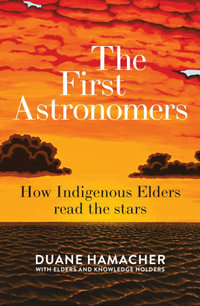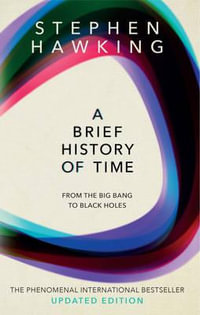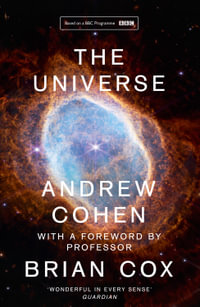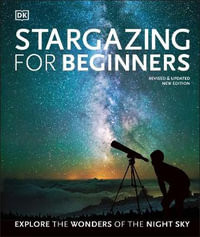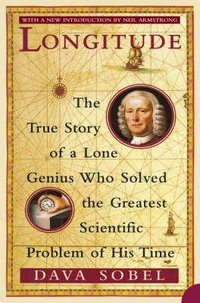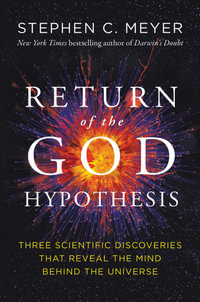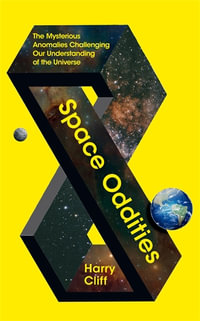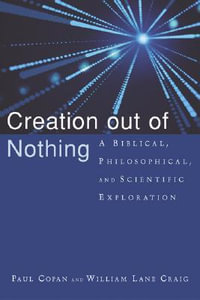
Russian Space Probes
Scientific Discoveries and Future Missions
By: Brian Harvey (Editor), Olga Zakutnyaya (Editor)
Paperback | 6 May 2011
At a Glance
548 Pages
24.41 x 16.99 x 2.82
Paperback
RRP $74.99
$65.50
13%OFF
or 4 interest-free payments of $16.38 with
orAims to ship in 7 to 10 business days
Industry Reviews
| Introduction by the authors | p. ix |
| Acknowledgments | p. xi |
| Glossary | p. xiii |
| Terminological and translation notes | p. xv |
| Reference notes | p. xvii |
| List of tables | p. xix |
| List of illustrations | p. xxiii |
| List of figures | p. xxvii |
| Early space science | p. 1 |
| Space science by balloon | p. 3 |
| Scientific flights into the atmosphere: the Akademik series | p. 14 |
| Scientific test flights with animals | p. 20 |
| The idea of a scientific Earth satellite | p. 23 |
| Scientific objectives of the first Earth satellites | p. 25 |
| Key people | p. 25 |
| Instead, Prosteishy Sputnik | p. 27 |
| PS 2 | p. 29 |
| Object D: the first large scientific satellite in orbit | p. 33 |
| Early space science: what was learned? | p. 37 |
| References | p. 39 |
| Deepening our understanding | p. 43 |
| Following Sputnik: the MS series | p. 43 |
| Cosmos 5 and Starfish: introducing Yuri Galperin | p. 48 |
| Following Sputnik: Elektron | p. 55 |
| Elektron feast | p. 58 |
| Introducing the Cosmos program | p. 64 |
| Dnepropetrovsky Sputnik (DS) | p. 66 |
| DS-U series | p. 76 |
| Molecular oscillator in orbit | p. 79 |
| The great hunt for anti-matter | p. 80 |
| First astronomy and heliophysical missions | p. 84 |
| New geomagnetic map | p. 85 |
| Supplementary science | p. 86 |
| Nauka modules | p. 91 |
| Application satellites with scientific instruments | p. 98 |
| The third radiation belt | p. 100 |
| Intercosmos | p. 102 |
| Intercosmos solar missions | p. 105 |
| Intercosmos ionospheric missions | p. 107 |
| Intercosmos charged particle missions | p. 109 |
| lonosfernaya Stantsiya and the Galperin missions | p. 113 |
| Proton: elusive cosmic rays | p. 119 |
| Specialized scientific missions: Energiya and Efir | p. 127 |
| Solar observatories: Prognoz | p. 129 |
| Relikt and Intershock | p. 135 |
| Early Soviet space science: what was learned? | p. 139 |
| References | p. 140 |
| Russian-language references | p. 151 |
| Revealing the Moon | p. 153 |
| First Cosmic Ship: discovery of the solar wind | p. 153 |
| Second Cosmic Ship: the lunar environment | p. 157 |
| Mapping the far side of the Moon | p. 158 |
| Soft-landing on the Moon | p. 165 |
| Orbiting the Moon | p. 169 |
| Mapping the Moon in detail: Luna and Zond | p. 173 |
| Recovering lunar samples | p. 181 |
| Luna 20: into the lunar highlands | p. 186 |
| Luna 24: the long view | p. 187 |
| Roving the Moon | p. 191 |
| Lunokhod 2: along the rim of Le Monnier [p196 | |
| Revealing the Moon: what was learned? | p. 201 |
| References | p. 203 |
| Russian-language references | p. 209 |
| Unveiling Venus | p. 211 |
| First Venus probes | p. 211 |
| At last, signals from Venus | p. 215 |
| Descent into the clouds | p. 221 |
| At last, the surface of Venus | p. 222 |
| Photographing the surface | p. 227 |
| Strange atmosphere | p. 233 |
| Chemical laboratory on the surface | p. 237 |
| Mapping the surface of Venus | p. 241 |
| Balloons into the atmosphere | p. 250 |
| Finally, to Halley | p. 255 |
| Unveiling Venus: what was learned? | p. 258 |
| References | p. 260 |
| The path to Mars | p. 263 |
| First Mars mission: Mars 1 | p. 265 |
| The orbital science missions of Mars 2 and 3 | p. 270 |
| Descent through Mars's atmosphere | p. 277 |
| Orbital science: observations from Mars 5 | p. 281 |
| Meeting with Phobos | p. 286 |
| Science from Phobos | p. 290 |
| Phobos postscript | p. 294 |
| The path to Mars: what was learned? | p. 295 |
| References | p. 297 |
| Orbiting space stations | p. 301 |
| Beginnings of space biology: Korabl Sputnik | p. 301 |
| Space biology by cosmonauts | p. 308 |
| Hitting the first walls of space biology: Cosmos 110 | p. 313 |
| Space biology's lunar journey: the flight of the tortoises | p. 315 |
| Soyuz as a platform for space science | p. 318 |
| Weightlessness: a warning | p. 321 |
| Salyut orbiting station | p. 324 |
| Salyut science | p. 327 |
| Solo Soyuz science | p. 330 |
| science | p. 331 |
| science | p. 332 |
| science: materials processing plant on orbit | p. 336 |
| science | p. 339 |
| science | p. 347 |
| Mir science | p. 352 |
| International Space Station (ISS) science | p. 360 |
| Orbiting space stations: what was learned? | p. 365 |
| References | p. 368 |
| Later Soviet space science: the observatories | p. 375 |
| Astronomical science: Astron, Kvant, Granat, and Gamma | p. 375 |
| Great observatories: Astron | p. 376 |
| Great observatories: Kvant | p. 380 |
| Granat and the great annihilator | p. 383 |
| The last great observatory: Gamma | p. 389 |
| Integral: the great attractor | p. 391 |
| Intercosmos: introducing the second phase | p. 393 |
| The Ellipse and Magik missions | p. 393 |
| The Ionozond missions | p. 397 |
| The Priroda and Bulgaria 1300 missions | p. 402 |
| The Aktivny and APEX missions | p. 405 |
| The Oval mission | p. 409 |
| Aureole 3 | p. 412 |
| The search for fireballs: Prognoz M (Tnterball) | p. 414 |
| Interball: the magnetosphere remodeled | p. 420 |
| Atmospheric science from sounding rockets: Vertikal | p. 424 |
| Smaller sounding rocket programs | p. 427 |
| Solar science: Koronas | p. 432 |
| Small specialized satellites: Pion and Kompass | p. 437 |
| Biological science: Bion | p. 440 |
| Materials science: Foton | p. 449 |
| Later Soviet space science: what was learned? | p. 453 |
| References | p. 455 |
| Russian-language references | p. 464 |
| Perspectives, past and future | p. 467 |
| Decline of science during the transition | p. 467 |
| Spektr observatories | p. 468 |
| Lunar "Polygons" | p. 471 |
| Phobos sample return | p. 472 |
| Space science in the federal space plan, 2006-2015 | p. 476 |
| Historical overview | p. 478 |
| The Keldysh ascendancy | p. 480 |
| The emergence of IKI | p. 482 |
| Key institutes and personalities in the space science program | p. 486 |
| Soviet and Russian space science in a global contex | p. 489 |
| Concluding remarks | p. 492 |
| References | p. 492 |
| Russian-language references | p. 494 |
| Annexe: Summary of Soviet and Russian space science missions | p. 495 |
| Bibliography | p. 503 |
| Index | p. 507 |
| Table of Contents provided by Ingram. All Rights Reserved. |
ISBN: 9781441981493
ISBN-10: 1441981497
Series: Springer Praxis Books
Published: 6th May 2011
Format: Paperback
Language: English
Number of Pages: 548
Audience: College, Tertiary and University
Publisher: Springer Nature B.V.
Country of Publication: US
Dimensions (cm): 24.41 x 16.99 x 2.82
Weight (kg): 0.86
Shipping
| Standard Shipping | Express Shipping | |
|---|---|---|
| Metro postcodes: | $9.99 | $14.95 |
| Regional postcodes: | $9.99 | $14.95 |
| Rural postcodes: | $9.99 | $14.95 |
How to return your order
At Booktopia, we offer hassle-free returns in accordance with our returns policy. If you wish to return an item, please get in touch with Booktopia Customer Care.
Additional postage charges may be applicable.
Defective items
If there is a problem with any of the items received for your order then the Booktopia Customer Care team is ready to assist you.
For more info please visit our Help Centre.
You Can Find This Book In
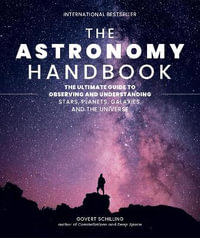
The Astronomy Handbook
The Ultimate Guide to Observing and Understanding Stars, Planets, Galaxies, and the Universe
Hardcover
RRP $55.00
$35.80
OFF
This product is categorised by
- Non-FictionScienceAstronomy, Space & Time
- Non-FictionSciencePhysicsApplied PhysicsAstrophysics
- Non-FictionEngineering & TechnologyTransport Technology & TradesAerospace & Aviation Technology
- Non-FictionEngineering & TechnologyOther Technologies & Applied SciencesSpace ScienceAstronautics
- Non-FictionEngineering & TechnologyTechnology in GeneralHistory of Engineering & Technology
- Non-FictionNature & The Natural WorldPopular Astronomy & Space




